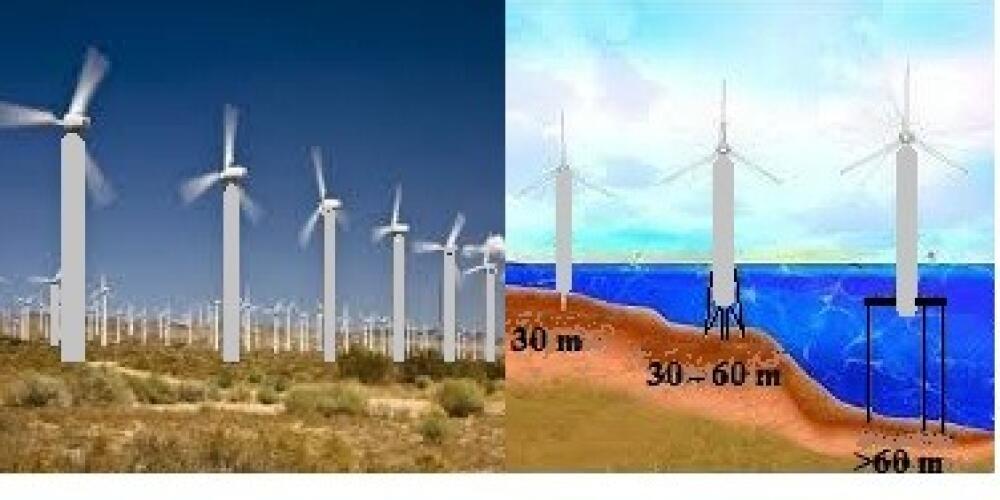
For renewables, and especially for wind, the biggest problem is that energy is produced at one point and consumed at another time when consumers need it most. Therefore, there must be spare capacity in the network, which must be switched on quickly when there is no wind.
This problem can be partially solved by connecting renewable energy sources from different countries to a single grid so that energy produced in one country can be consumed in another country. The larger the net, the greater the likelihood of wind blowing somewhere.
Another solution is to create large energy storage facilities.
The most economical energy storage facilities are reversible hydroelectric power plants with the highest technical and economic efficiency. They surplus electricity in daily periods when energy is the cheapest to pump water into high mountain lakes, and in periods of high consumption they convert that stored energy into electricity again. The life of such hydroelectric power plants is at least 100 years, and only smaller mechanical moving parts last shorter. Energy efficiency is 70 to 85 percent. The problem is the lack of sites for the construction of such hydro power plants.
The large underground compressed air storage facilities have similar economy and durability.
By storing compressed air, energy is stored in one period when it is surplus and used in another when it is needed by consumers. This energy storage is most commonly found in mines, underground caves, or in large plastic bags deep at the bottom of the sea or lake. Compressed air energy storage was highly developed before the massive use of electricity, from 1870 until the advent of alternating electricity that made it easy to transport energy remotely.
Compressed air energy can also be stored in steel compressed air vessels, which are very inexpensive and can last as well as reversible hydroelectric plants.
The main problem with compressed air is the low energy density.
The energy density of compressed air is 2-5 Kwh per cubic meter, and 50 to 65 percent can be recovered from the energy input.
In addition to reversible hydroelectric power plants, compressed air energy storage tanks are the basic means of massive and commercial energy storage. Underground tanks are the most economical, with a capacity of 400 MW and a discharge time of 8 to 26 hours.
The big problem with compressed air is that the pressure varies greatly during operation, and this has a bad effect on the technical utilization of energy.
To further increase the economy of the compressed air system, cost reductions are required. And wind energy storage costs could best be reduced by utilizing existing elements that have a different function to store energy. The most expensive part of the large wind turbines are the pillars that hold the gondola, generator and propellers. These columns are hollow and could also be used as large upright cylinders for air compression. That way the columns would have a dual function. In order to increase their security, and to increase their capacity, they should be 10 to 20 percent wider and their price should be 20 to 30 percent higher. They should be made of steel or carbon fiber to withstand high pressures. The price of the pole is about 15 to 20% of the factory price of the whole wind turbine, and the pole is also a deciding factor in the cost of transport and installation. Service ladders for climbing to the generator should be on the outside as with large industrial chimneys.
One steel round pillar, 50 m high and 4 m in diameter, has a volume of 620 cubic meters of compressed air. This means that 1200 to 3000 Kwh of energy could be stored in one such column, depending on the pressure at which the air is being pressed. The average consumption of one household is about 10 Kwh per day, which means that in one such pillar one could accumulate enough energy for the daily consumption of 100 to 300 households.
For this kind of energy storage, a 500 KW air compressor should be placed on a 50 m high column, which means that the column can be filled with compressed air for 2.5 to 6 hours of operation at maximum power. Windmills do not work about 50 percent of the time, and when they do, the wind is usually weaker than the maximum utilized, so the stuffed poles could take several days. Thanks to the large storage capacity of the columns, they would be filled with air when the wind was blowing, and would be drained when energy was most needed and most expensive. When filling the columns with air, a large amount of condensed water would be generated in the columns, which could be used to irrigate the terrain around the wind turbines.
From the wind turbine, compressed air would be piped to the air turbines and generators. As a result, electricity would not be produced on the wind turbines themselves, but in nearby places that would supply compressed air supply pipes. This is where compressed air would drive the air turbines that power the electric generators. In doing so, large quantities of cold air would be generated that could be used to cool adjacent buildings, and considerable amounts of water could be obtained by condensation from the surrounding air, especially in summer. This water could be used in the irrigation environment, which would further increase the cost-effectiveness of this way of storing wind energy.
Tags
Featured articles